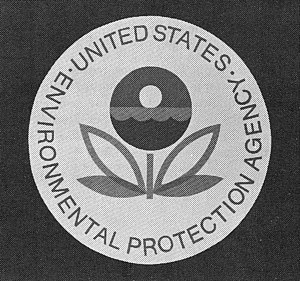If you’ve got some spare time this weekend, take some time to enjoy this fantastic documentary of one woman’s quest to transform shrimp aquaculture practices. Andrew Revkin of the New York Times helped produce this 16 minute documentary of Linda Thornton, a biologist who uprooted herself from her home in Illinois to Belize, and set out to farm shrimp in a sustainable manner (for instance, without antibiotics). It is quite a story, filled with some sad moments as well as uplifting ones. She partners up with the World Wildlife Fund in an effort to create the first set of standards for sustainable aquaculture and is trying to get folks in the US to adopt the practices as well. Please enjoy and share your impressions of her quest. I find the most fascinating parts of the video to be the overview of her aquaculture facility and how it all fits together.
![]()
Linda Thornton, an inspiring aquaculturist on a mission for sustainability
Deep sea neighborhood sees improvement when philanthropic vents release Fool’s Gold
“As iron sharpens iron, so a friend sharpens a friend.” King Solomon
There is not a lot life down in the deep sea. Fortunately, it is convenient that the hydrothermal vents down there share a wealth of minerals to the otherwise desolate neighborhood. More notably what was just uncovered is that iron particles (known as pyrite or commonly called Fool’s Gold) are released by the vents and suspend in the nearby environment. This discovery was made by researchers at the University of Delaware.
While it is not surprising that these vents release iron, what is shocking is that it does not fall directly to the bottom of the ocean floor as previously thought. Since the size of the iron particles that are released by the hydrothermal vents are so tiny (a diameter 1,000 times smaller than that of a human hair) they are actually dispersed throughout the water column of the deep sea this is turn helps create a richer more vibrant deep sea neighborhood than deep sea areas without vents.
“As pyrite travels from the vents to the ocean interior and toward the surface ocean, it oxidizes gradually to release iron, which becomes available in areas where iron is depleted so that organisms can assimilate it, then grow,” said scientist George Luther of the University of Delaware.
Related articles
- As good as gold (eurekalert.org)
- Fool’s Gold Is the Ocean’s Iron Pipeline (livescience.com)
- It Turns Out Earth is Producing Its Own Nanoparticles (azonano.com)
Syzygy and Supermoons
 OK, just in case you are playing some pub trivia this summer I want to mention the phenomenons of syzygy and supermoons. In celestial terms, syzygy refers to when three heavenly bodies (for instance the sun, the moon, and the Earth) are aligned. This alignment typically enhances tides to an exceptional level. In marine science, it can also refer to the highest of the high tides during one tidal period.
OK, just in case you are playing some pub trivia this summer I want to mention the phenomenons of syzygy and supermoons. In celestial terms, syzygy refers to when three heavenly bodies (for instance the sun, the moon, and the Earth) are aligned. This alignment typically enhances tides to an exceptional level. In marine science, it can also refer to the highest of the high tides during one tidal period.
Now, on to supermoons. They would be the syzygy when the moon is at its closest approach to the Earth (or, in its perigree).
The image above is from the supermoon this past March. The picture was taken is Egypt (If anyone would like to sponsor a trip for this Beach Chair Scientist to someday visit Egypt please let me know. It is a bucket list trip for my husband and I).
Everybody do the ‘Stingray Shuffle’
Staying safe at the beach this summer can mean more than just applying liberal amounts of sunscreen. If you are going to be visiting the southeastern United States you may want to try the ‘stingray shuffle’ to avoid a venomous injection from a stingray. A stingray’s main defense is it’s barb which they arc up over their backs and strike in a manner similar to scorpions. Stingrays are docile creatures and do not want to use this defense tactic. Since stingrays are found mostly on the ocean floor it is best to drag your feet lightly and do the ‘sting ray shuffle’ to warn stingrays that you are approaching. If you do get jabbed, hot water can help in the short term. But it is best to seek professional medical attention.
Here is a video from the National Geographic YouTube Channel to teach you some more about stingrays.
‘I’m a Manatee’ by John Lithgow
Back in 2003 Janice Nearing, Media Relations Coordinator with Save the Manatee, interviewed John Lithgow about his new book I’m a Manatee. Here is an excerpt (click here for the full interview).
Q: Your new book, I’m a Manatee, has a Seuss-ian feel to it, with rhyming verses and fun illustrations. Does your playful side make it easy for you to write children’s’ stories?
A: I think everybody has a playful side, but kids especially. My book writing grew out of entertaining kids, the best audience an actor could hope for. They bring the playful side out in me.
Q: As you know, manatees are an endangered species. Do you consider yourself an environmentalist?
A: I’m very concerned for the future of the earth and its amazing creatures. We’ve got to be careful and make sure we don’t foul our own nest. But I also have a lot of faith in people.
Q: Your book portrays the manatee as a noble creature in the face of countless human-created dangers.
A: The manatee is such a wonderful animal, gentle, graceful, a little comical. It’s important for everyone to know all about them.
Q: If you were a manatee, what message would you have for humanity?
A: Take care, be kind, be considerate of other people and other species, and be loving.
2003
Yes, this is the same man that won an Emmy for his portrayal as the ‘Trinity Killer’ on Dexter.
Related link:
Who has the longest commute in the sea?
An animal lives to eat and breed. In order to do this, some animals that call the ocean habitat ‘home’ have to travel great distances to find food or reach a particular breeding ground. Here is a breakdown of some of the most impressive migrations in and around the sea.
Perhaps the longest migration of any mammal on Earth,  the gray whales travel 12,000 miles round trip. They spend the summer months in the Bering Sea area between Alaska and Russia. Eventually they make their way to the west coast of Canada and the United States and finally end up in the quiet lagoons of Baja California during the winter months. In the spring they make their way back to the Bering Sea. Also, notable is the migration of the humpback whales. They can travel up to 5,000 miles.
the gray whales travel 12,000 miles round trip. They spend the summer months in the Bering Sea area between Alaska and Russia. Eventually they make their way to the west coast of Canada and the United States and finally end up in the quiet lagoons of Baja California during the winter months. In the spring they make their way back to the Bering Sea. Also, notable is the migration of the humpback whales. They can travel up to 5,000 miles.
Arctic terns fly over 25,000 miles to the Southern Ocean. Sooty shearwaters travel 64,000 miles over the Pacific Ocean in figure eight patterns.
Leatherback sea turtles travel over 3,000 miles to get to their nesting beaches.
Here is a video from PBS’ Jean-Michel Cousteau Ocean Adventure that gives a nice overview of the migration of the gray whale.
Image (c) mistertoast.blogspot.com
Related articles
- Four ways to have a whale of a time (cnn.com)
How to win a game of Survivor if stranded on a beach
 While I am not here to tell you how to form alliances, I can mention some edible seaside plants found along the Atlantic coast. These include: Sea rocket, sea lettuce, prickly pear, bull thistle, dewberry and winged sumac. You can eat the blackberries of the dewberry with milk and honey. For a refreshingly cool drink soak winged sumac in cool water for 15 minutes. Devour the sweet pulp of the prickly pear after you peel away the skin. Add the leaves of sea rocket and sea lettuce to a fresh seaside salad. Lastly, gorge on the stems of the bull thistle (of course, only after you’ve removed the thorns!).
While I am not here to tell you how to form alliances, I can mention some edible seaside plants found along the Atlantic coast. These include: Sea rocket, sea lettuce, prickly pear, bull thistle, dewberry and winged sumac. You can eat the blackberries of the dewberry with milk and honey. For a refreshingly cool drink soak winged sumac in cool water for 15 minutes. Devour the sweet pulp of the prickly pear after you peel away the skin. Add the leaves of sea rocket and sea lettuce to a fresh seaside salad. Lastly, gorge on the stems of the bull thistle (of course, only after you’ve removed the thorns!).
Related articles
- Sea life: Sea lettuce (learntodivetoday.wordpress.com)
- Seaweeds are Protists Too (sciencemontessori.wordpress.com)
- Seaweeds are Protists Too (sciencemontessori.wordpress.com)
Related articles
- Seaweeds are Protists Too (sciencemontessori.wordpress.com)
May is National Wetlands Month
In 1991 the Environmental Protection Agency (EPA) declared May to be National Wetlands Month. They set aside the day to celebrate the economic and ecological value of wetlands and educate America of the natural resource. Throughout the country events take place to encourage you to learn more about wetlands and take action to restore them. Whether your neighborhood wetland is a swamp, bog or tidal marsh these areas are vital filtration and storage areas, as well as, nursery grounds to continue biological productivity in our local watersheds and beyond. Unfortunately these areas are threatened and their biggest enemy is mankind. According to the EPA, “Urban and rural development is now the leading cause of wetland loss, accounting for nearly 60% of freshwater wetland loss nationally.” Good news though is that on April 27, 2011 Lisa Jackson (Administrator of the EPA) work with others to get the Obama administration recommitted to recognizing the importance of clean water and healthy watersheds.
Surf Your Watershed is a great place to find out if there is a local organization dedicated to protecting your local wetland.
Angela loves sea turtles as well as cats!
Anglea Kinsey does a wonderful job of being compassionate to the feline population as she plays the role of Angela Martin on the show ‘The Office’. But did you know she also demonstrates equal sympathy for the plight of sea turtles as a spokesperson for Oceana?
Back in December, Angela Kinsey and Racheal Harris (The Hangover) joined up with Oceana for a campaign to get “Sea Turtles Off the Hook!” It is a focused on asking folks to reassess commonly used fishing gear because they may be harmful to sea turtles. She gently reminds us all to “Cut down on your use of plastic shopping bags because many end up in the ocean. If you’re at a beach where there are sea turtles, just let them be. And don’t throw trash out on the street near coastlines. Pick it up!”
Beyond Angry Birds
Not too long ago I heard a story on the radio raving about how well folks are transitioning children books to iPad apps. Basically what it is expanding upon is the idea that if your kiddo is going to be entertained with an iPad why not have them explore something that is enriching? A little edu-tainment never hurt anyone.
Take a look! I recommend Oceanhouse Media which has apps from the Smithsonian as well as rights to the entire Dr. Suess collection (including my favorite, The Lorax). Also Scholastic features many classics including the Magic School Bus: Oceans.











What people are saying …